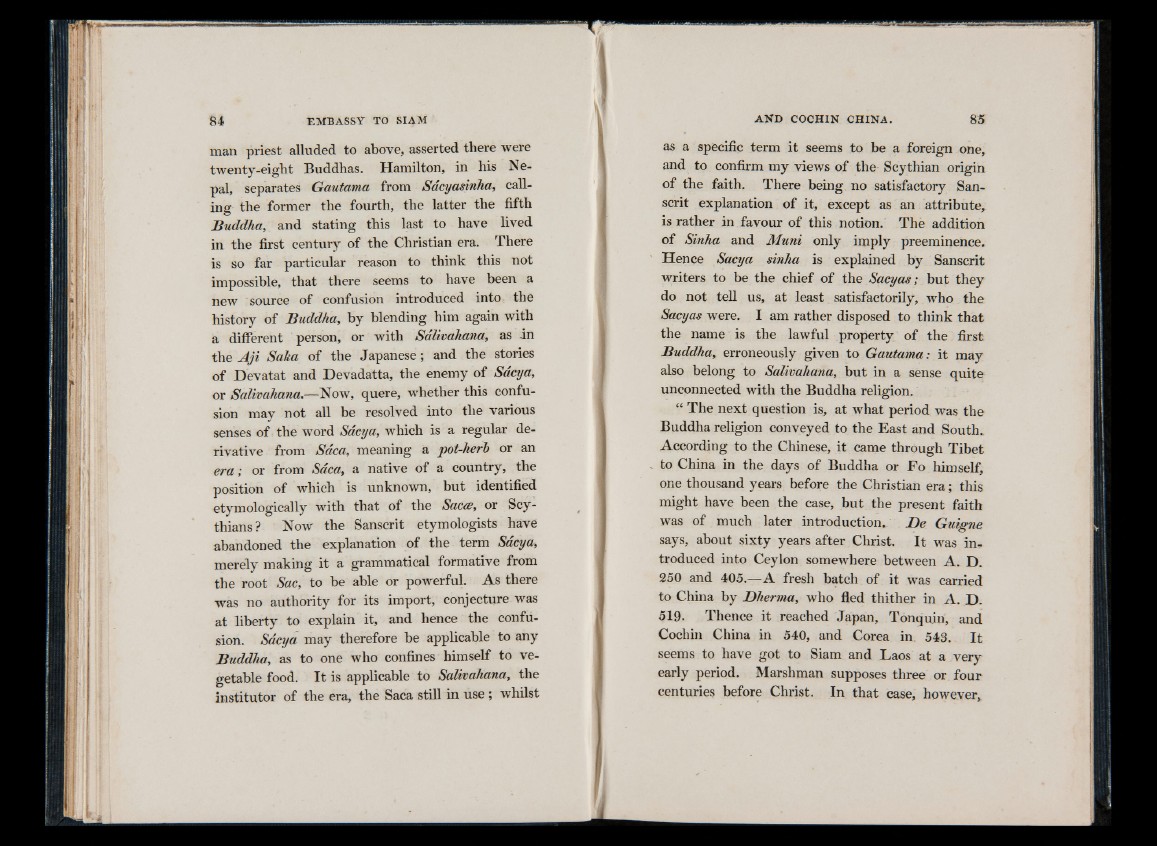
man priest alluded to above, asserted there were
twenty-eight Buddhas. Hamilton, in his Nepal,
separates Gautama from Sacyasinha, call-
ins: the former the fourth, o the latter the fifth
Buddha, and stating this last to have lived
in the first century of the Christian era. There
is so far particular reason to think this not
impossible, that there seems to have been a
new source of confusion introduced into the
history of Buddha, by blending him again with
a different person, or with Sdlivahana, as dn
the A ji Saha of the Japanese; and the stories
of Devatat and Devadatta, the enemy of Sacya,
or Salivahana.—Now, quere, whether this confusion
may not all be resolved into the various
senses of the word Sacya, which is a regular derivative
from Saca, meaning a pot-herb or an
e ra ; or from Saca, a native of a country, the
position of which is unknown, but identified
etymologically with that of the Sacce, or Scythians?
Now the Sanscrit etymologists have
abandoned the explanation of the term Sacya,
merely making it a grammatical formative from
the root Sac, to be able or powerful. As there
was no authority for its import, conjecture was
at liberty to explain it, and hence the confusion.
Sacya may therefore be applicable to any
Buddha, as to one who confines himself to vegetable
food. I t is applicable to Salivahana, the
institutor of the era, the Saca still in u s e ; whilst
as a specific term it seems to be a foreign one,
and to confirm my views of the Scythian origin
of the faith. There being no satisfactory Sanscrit
explanation of it, except as an attribute,
is rather in favour of this notion. The addition
of Sinha and Muni only imply preeminence.
Hence Sacya sinha is explained by Sanscrit
writers to be the chief of the Sacyas; but they
do not tell us, at least satisfactorily, who the
Sacyas were. I am rather disposed to think that
the name is the lawful property of the first
Buddha, erroneously given to Gautama: it may
also belong to Salivahana, but in a sense quite
unconnected with the Buddha religion.
“ The next question is, at what period was the
Buddha religion conveyed to the East and South.
According to the Chinese, it came through Tibet
to China in the days of Buddha or Fo himself,
one thousand years before the Christian e ra ; this
might have been the case, but the present faith
was of much later introduction. B e Guigne
says, about sixty years after Christ. I t was introduced
into Ceylon somewhere between A. D.
250 and 405.—A fresh batch of it was carried
to China by Bherma, who fled thither in A. D.
519- Thence it reached Japan, Tonquin, and
Cochin China in 540, and Corea in 543. I t
seems to have got to Siam and Laos at a very
early period. Marshman supposes three or four
centuries before Christ. In that case, however,